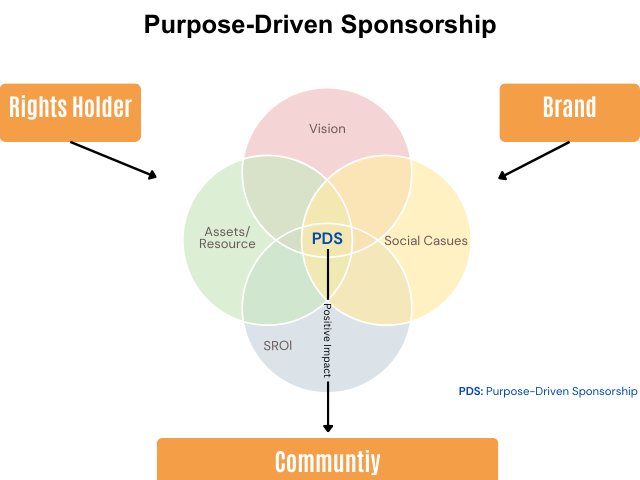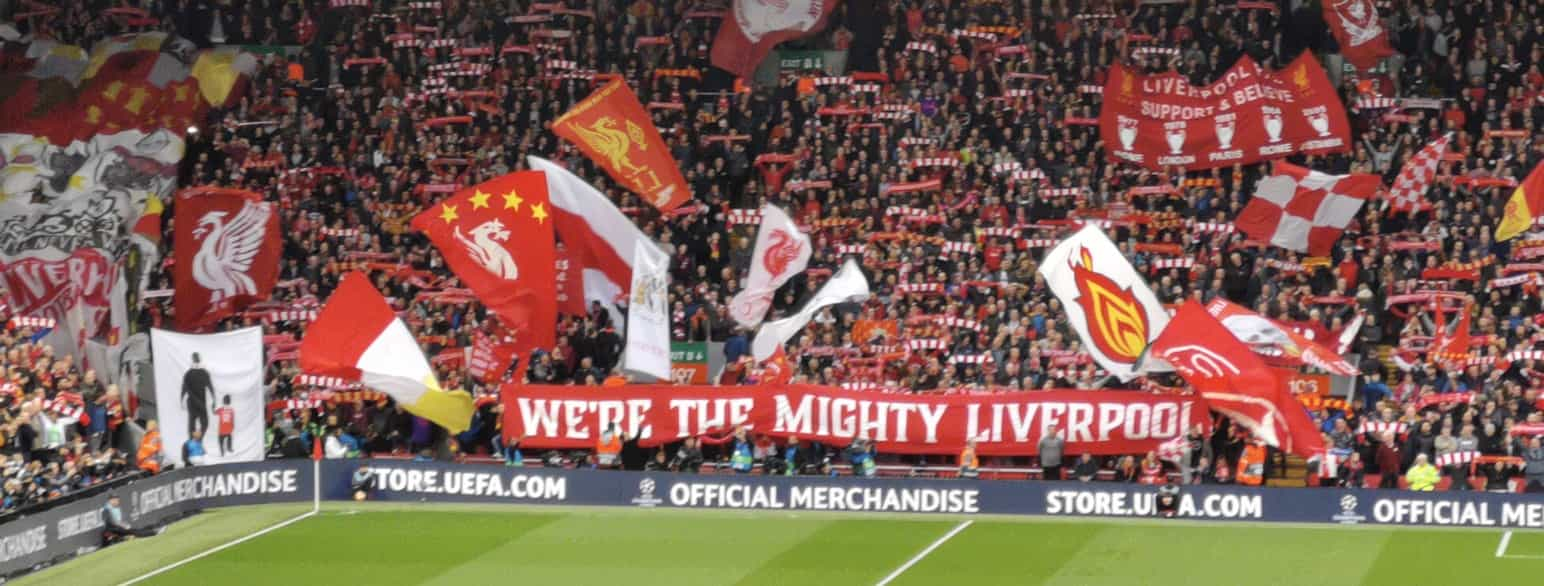More Than a Logo: How Sports and Brands Can Join Forces for Good

Partnerships between brands and sports organisations have existed for decades with the likes of Coca-Cola and the Olympics maintaining their relationship for the past 95 years! The Olympics was also one of the first to witness revolutionary athlete sponsorships. Jesse Owens endorsing Adidas shoes and winning four Golds at the 1936 Berlin games is one for the history books.
The trend of brands utilising sport as a platform to propel their reach and growth has continued to this day. But what makes the sports industry such a lucrative setting that keeps attracting brands of all shapes and sizes?
Financially speaking, the sports sponsorship industry was valued at $66 billion (£53 billion) and was projected to grow to a whopping $108 billion (£86 billion) by 2030.
Inherently, sport brings out the emotional side of individuals and makes them act purely out of passion and loyalty. This is what brands want to capitalise on. It is no secret that fans spend more than the average person, making sports a lucrative proposition for businesses all over the world.

Traditional Sponsorship Fit
The sponsorship market has traditionally been a revenue-driven market. The main goal of the partnership is to expand audiences, engage customers with innovative activations, and drive sales of the product or service provided. There are a few metrics that stakeholders adhere to for a stronger congruence and fit perception:

- Product: This is the value proposition that the brand and the entity come up with to engage their audiences. From digital to on-ground activations, every medium is seen as a potential source of new customers.
- Geography: Most brands tend to either stick to their domestic location or partner with a global entity to expand their reach. Ultimately, a broader net presents more opportunities for conversion.
- Audience: Sponsors tend to match the audience profile of the entity with their target demographic to find the right fit. The inherent aim is to find the same customer base to achieve marketing goals.
Purpose-Driven Partnerships
As the world evolves into a more socially aware and responsible community, brands need to change their ways of interacting with sports teams and audiences. To be successful and relevant, there needs to be a clear vision - a clear WHY.
Across sports, fans are willing to support brands and partnerships that share the same values and are committed to making a positive impact in the world. This presents a great opportunity for the stakeholders to foster deep loyalty and trust by leading with purpose.
Purpose-driven partnerships involve a brand channelling its authentic values and its WHY to stand for a greater cause. When done authentically, this is a Win-Win-Win for all stakeholders. Brands foster trust and positive perception among the audience and rights holders gain access to resources and expertise. The third and most important 'win' is the benefit to society, which should be the inherent driving force.
The partnership between Hummel and Denmark's National Football Team is one such example. During the 2023 FIFA World Cup, held in Qatar, Denmark's kit sponsor Hummel created 'minimalist' shirts as a way of protesting against the poor state of human rights in the country. With the Denmark Football Association being vocal against the issues for a long time, this was the perfect opportunity to build on those values to deliver a campaign that raised awareness and put the spotlight on Qatar for the uninitiated.
Purpose-Driven Framework
If you refer back to my article on how to find a business' Ikigai, you'll find that everything that is driven by purpose can fit into that model. Moving away from the traditional framework, rights holders and brands need to first define their purpose individually and then as a whole.

There are four key elements that help foster a purposeful partnership and bring the Win-Win-Win proposition to life:
Vision
This is the core belief and values that define the purpose of existence for the rights holders and brands. Having a similar 'purpose' is much deeper than simply fulfilling the 'value-fit' box. It is more about wanting to have a positive impact on the world and not just generating revenue.
Assets/Resources
Having a solid vision on paper is not enough to transform the world if there are no tools to execute it. Resource and knowledge sharing should be a big part of purpose-driven partnerships to give a how to the why. Each entity should strive to build its asset bank keeping the greater purpose in mind.
Social Cause
There might be a number of social causes supported by the brand and right holder individually but for a purpose-driven partnership to be successful, it is important to find the common ground. Authenticity is the key here. Creating campaigns that do not reflect the core beliefs of both parties will damage the audience's perception in the long run. However, the above points of a shared vision and resources can bridge this gap, but only in time.
Social Return On Investment (SROI)
Finally, in a world driven by data, not having appropriate measuring tools is almost criminal. While the usual Return on Investment (ROI) metrics work well for a revenue-based business model, adding a layer of societal impact and calculating the SROI will improve the tracking of purpose-driven campaigns.
Case Study
Liverpool FC x SC Johnson

Liverpool FC (LFC) and SC Johnson (SCJ) partnered in 2021, to create a healthier world and bring their vision to life by setting 'Goals for Change'.
Vision
LFC live by their core values of 'You'll Never Walk Alone and 'This Means More' to the fullest and are widely appreciated for their contributions to society outside of football.
SCJ pride themselves in being a 'family company working towards a better world'. They have been creating environment-friendly products in line with their purpose of creating a more sustainable, transparent and healthy society.
Resources
The expertise brought over by SCJ and the LFC's physical assets were a perfect set of tools required to execute a valuable campaign.
SCJ aimed to make the Anfield stadium and LFC's training a safe space for fans, players and staff. This was based on the areas in these facilities that were most prone to spreading germs through contact and other means. Environment-friendly products were installed to encourage healthy habits whilst reducing plastic waste.
Social Cause
Both LFC and SCJ have been active in their sustainability goals. While SCJ has created new-age climate-friendly products to serve their vision of a 'waste-free' world, LFC has supported sustainability with their past campaigns under 'The Red Way' initiative.
Impact
The partnership has seen tremendous progress in a short space of time. LFC has reduced general waste by 25% and has increased the plastic bottle collection rates by 61% during the course of the partnership.
Manchester City FC x Xylem
Manchester City FC (Man City) and Xylem partnered to address and solve water problems around the globe. The aim of the partnership was to educate and raise awareness about droughts, water shortages, and flooding among their fanbase.
Vision
Since the Abu Dhabi takeover in 2008, City Football Group's (CFG) flagship club Man City have been building on the value of transforming their community. Over the years, the vision has evolved to impact lives across the world through football.
Xylem, a water technology company, has been working hard to improve the water-related challenges around the world with their innovative strategies and expertise.
Resources
The knowledge and strategies that Xylem has been implementing were a perfect fit for the resources and global reach of Man City.
As part of the partnership, Xylem created a unique platform to connect with Man City fans across the globe to start conversations around water challenges and solutions.
From creating digital content to appointing Pep Guardiola as the campaign's brand ambassador, and utilising other sponsors like Puma to design special kits with reduced water consumption, the partnership has maximised the value of the available resources.
Social Cause
Both Man City and Xylem have been pioneering various sustainability and social causes worldwide. Given the increasing intensity of global warming, it is predicted that over 3.2 billion people will face water scarcity by 2050 if nothing is done now.
Although not seemingly urgent, it would be catastrophic to not act and spread awareness around the issue - a challenge both Man City and Xylem have accepted.
Impact
Thanks to CFG's widespread network, the partnership enabled Man City and Xylem to build a water tower in India and provide important education around hygiene through football. Other similar projects meant that over 9k people were provided education and access to water in the first year of the partnership.
In conclusion, the world of sports sponsorships has evolved beyond mere financial transactions to purpose-driven partnerships. Brands are increasingly aligning with social causes, leveraging the emotional connection that sports evoke. This paradigm shift not only benefits stakeholders but also society at large. As we stride into an era of conscious consumerism, purpose-driven sponsorships stand as a testament to the potential of collaboration for a better world.
Comments ()